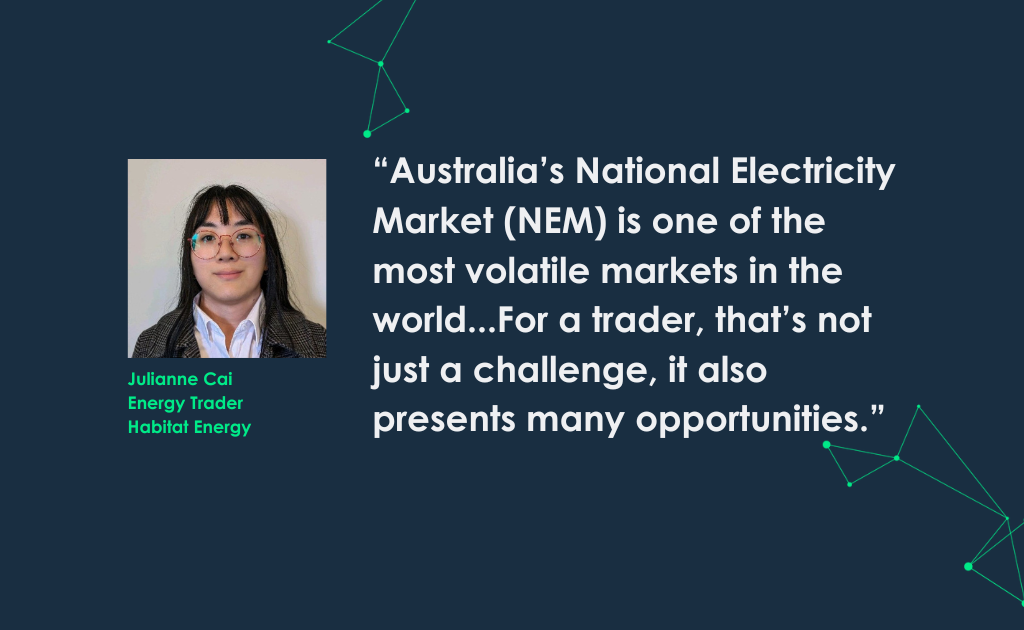As an energy trader in our Melbourne team, Julianne Cai is tasked with maximising revenues from battery storage and renewable energy assets in Australia’s National Electricity Market. Discover more about Julianne’s role and what attracted her to the industry.
What does your job involve?
I am an energy trader, which means that I buy and sell energy using various assets (such as large battery storage systems and solar farms) in order to maximise revenues from the asset. It’s an exciting role that blends market strategy with operational expertise. On one hand, you’re trying to capitalise on price arbitrage opportunities, while also managing an asset’s physical constraints, such as state-of-charge, ramp rates, etc.
Describe a typical day?
Each day is a balance between real-time decision making and asset monitoring. While we have in-house algorithmic optimisers and forecasters that handle routine dispatch, often the trader will intervene in various ways: adjusting trading parameters, overriding optimiser instructions, or managing performance during times of high volatility. Each day presents a blend of strategic patience and quick reaction, where every shift in energy generation, demand, or grid conditions can create an opportunity.
How did you get into the renewable energy industry?
Before my role at Habitat Energy, I was an MSc student at the University of Melbourne, studying pure mathematics. Originally, I wanted to pursue a career in academia as a mathematician, but soon realised that the traditional academia career path wasn’t suitable for me. However, I still loved research, and wanted a role where I could apply my mathematical skills in a way that was impactful.
After exploring various industries, I discovered energy trading. I found that it was a field which utilised fast optimisation algorithms, sophisticated price forecasting algorithms, and also used a lot of strategic decision-making, which I thought was a perfect place for someone of my background to thrive. At the same time, my growing awareness of climate change drew me towards working with renewables, which led to me to pursue a role at a company focused exclusively on trading renewable assets.
What excites you most about working in this space?
With the threat of climate change looming over us, it has never been more important to build out renewable infrastructure on a massive scale. Power markets lie at the heart of this transition. Further, Australia’s National Electricity Market (NEM) is one of the most volatile markets in the world, with prices swinging based on sun, wind, and demand shifts. For a trader, that’s not just a challenge, it also presents many opportunities. Every day demands quick thinking, adaptability, and creativity to navigate this market.
What’s your favourite part of the job?
The people – especially my fellow traders. We have very diverse backgrounds, ranging from seasoned energy traders and economists to electrical engineers who understand solar and battery operations inside-out, alongside people with more theoretical mathematical backgrounds such as myself. It’s incredibly rewarding to be able to work alongside such intelligent people everyday. The mix of perspectives pushes everyone to think differently about a problem.
Learn more about working at Habitat Energy
